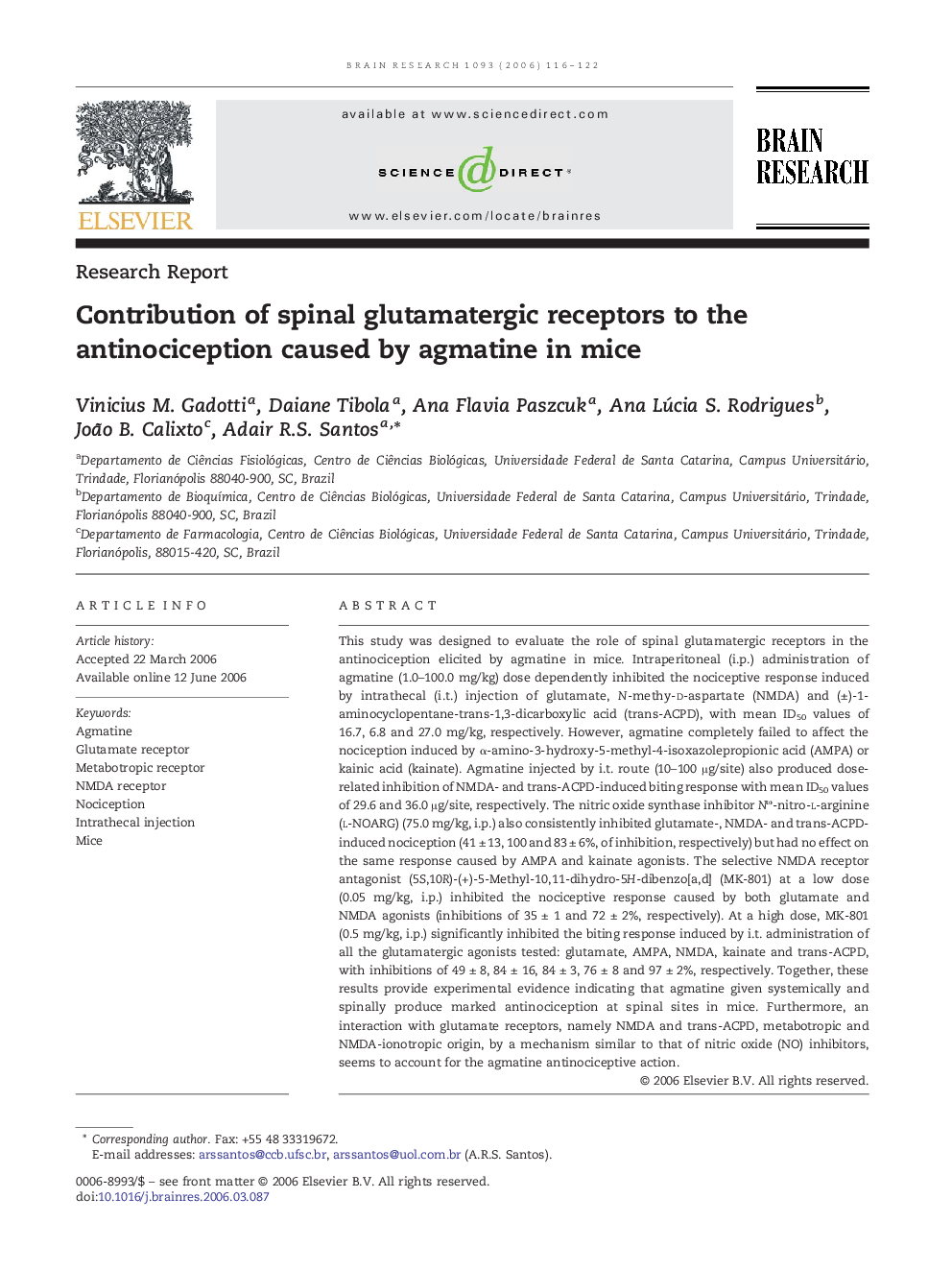| کد مقاله | کد نشریه | سال انتشار | مقاله انگلیسی | نسخه تمام متن |
|---|---|---|---|---|
| 4332802 | 1292911 | 2006 | 7 صفحه PDF | دانلود رایگان |

This study was designed to evaluate the role of spinal glutamatergic receptors in the antinociception elicited by agmatine in mice. Intraperitoneal (i.p.) administration of agmatine (1.0–100.0 mg/kg) dose dependently inhibited the nociceptive response induced by intrathecal (i.t.) injection of glutamate, N-methy-d-aspartate (NMDA) and (±)-1-aminocyclopentane-trans-1,3-dicarboxylic acid (trans-ACPD), with mean ID50 values of 16.7, 6.8 and 27.0 mg/kg, respectively. However, agmatine completely failed to affect the nociception induced by α-amino-3-hydroxy-5-methyl-4-isoxazolepropionic acid (AMPA) or kainic acid (kainate). Agmatine injected by i.t. route (10–100 μg/site) also produced dose-related inhibition of NMDA- and trans-ACPD-induced biting response with mean ID50 values of 29.6 and 36.0 μg/site, respectively. The nitric oxide synthase inhibitor Nω-nitro-l-arginine (l-NOARG) (75.0 mg/kg, i.p.) also consistently inhibited glutamate-, NMDA- and trans-ACPD-induced nociception (41 ± 13, 100 and 83 ± 6%, of inhibition, respectively) but had no effect on the same response caused by AMPA and kainate agonists. The selective NMDA receptor antagonist (5S,10R)-(+)-5-Methyl-10,11-dihydro-5H-dibenzo[a,d] (MK-801) at a low dose (0.05 mg/kg, i.p.) inhibited the nociceptive response caused by both glutamate and NMDA agonists (inhibitions of 35 ± 1 and 72 ± 2%, respectively). At a high dose, MK-801 (0.5 mg/kg, i.p.) significantly inhibited the biting response induced by i.t. administration of all the glutamatergic agonists tested: glutamate, AMPA, NMDA, kainate and trans-ACPD, with inhibitions of 49 ± 8, 84 ± 16, 84 ± 3, 76 ± 8 and 97 ± 2%, respectively. Together, these results provide experimental evidence indicating that agmatine given systemically and spinally produce marked antinociception at spinal sites in mice. Furthermore, an interaction with glutamate receptors, namely NMDA and trans-ACPD, metabotropic and NMDA-ionotropic origin, by a mechanism similar to that of nitric oxide (NO) inhibitors, seems to account for the agmatine antinociceptive action.
Journal: Brain Research - Volume 1093, Issue 1, 6 June 2006, Pages 116–122